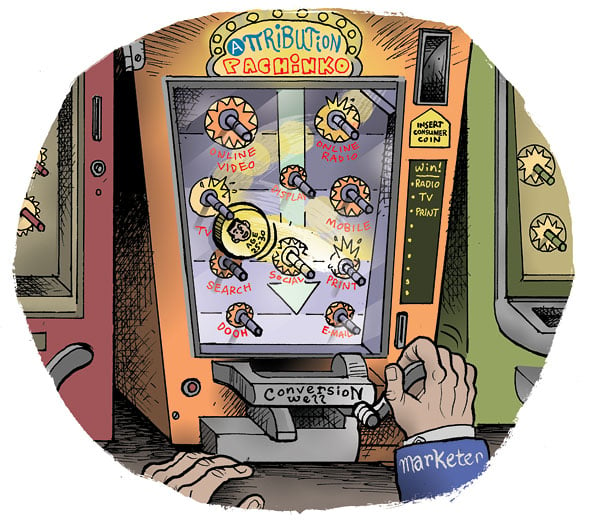Advertisers of all stripes are rethinking their ad measurement and attribution strategy. Signal loss and all that.
But the burst of new incrementality testing models, in-housing programs, multitouch attribution and media mix modeling efforts haven’t exactly led to a renaissance of understanding how measurement works, according to Rudy Grahn, the attribution and measurement global strategy lead at Prohaska Consulting.
“We’re at a place now where I think people make these reflexive assumptions that they have to do it, no matter what,” Grahn said. “And I’ve seen so many failed deployments.”
In response, Prohaska is releasing a new measurement framework called the Landscape of Measurement and Attribution Partners, or LAMP (think of an attribution Lumascape but set on an axis between planning and optimization, and from channel holistic to channel specific vendors).
The new LAMP model should help advertisers “right-size” their ad measurement investments against their actual needs, Grahn said. Do you have full-channel measurements that warrants a media mix modeling program? Are you a search-and-social advertiser that works the walled gardens? Is my attribution vendor generating its own ROI?
Advertisers are learning that, in many cases, they don’t have to do everything, and don’t have to do it themselves.
Over-measured
Advertisers should take a “Darwinian” approach to attribution investments, similar to how they might manage their media, Grahn said.
For example, over the past couple years, many companies brought in expensive third-party measurement vendors to parse investments across walled gardens, primarily Google and Meta, with a few other platforms like Amazon and TikTok in the mix.
“If you only have two or three media providers in there, and they’re walled gardens,” Grahn said, “what is the purpose of bringing a third-party vendor in when they’re not really going to be able to see behind the walled garden anyway?”
In that context, a brand might be better off defaulting to the platform’s own attribution tools and investing less in third-party attribution. And he said startups like Measured and LiftLab are useful go-betweens, since they automate many manual processes brands took on when they in-housed ad tech and agency services
Defaulting to walled garden analytics is not a satisfying option, especially for CMOs, he said. There’s a strong instinct in media to have an independent arbiter of budgets. But over-indexing on the cost or the need for expansive measurement programs means that marketers actually risk giving the walled gardens more leverage, since both Google and the CMOs of the world are trying to convince CEOs and CFOs what’s best.
The C-suite pitch
Google and major consultancies such as Deloitte and Accenture, which are often preferred vendors for Google, are pushing for a more platform-based form of attribution. In other words, more holistic partnerships with privacy, data costs and services baked in to support cloud data warehousing, retail media and, of course, attribution.
“And they tend to do that at the CEO level, rather than the CMO level,” Grahn said.
Advertisers that invested heavily in sophisticated attribution and even those with a more basic approach might spend the equivalent of half their media budget again on measurement. “And I actually think 50% is low in the current world,” Grahn said.
Even if the attribution tech does a decent job of assigning value across various media channels, it needs to generate more than a $500,000 lift on performance for every million dollars spent on media, Grahn said. “And I don’t think people clearly understand how to demonstrate that.”
Add in the costs of privacy tools and compliance, which Google pitches as built-in, set-it-and-forget-it options, and the CEO in particular can be relatively easily convinced to let someone else deal with those problems.
“A lot of the in-housing efforts were based on assumptions that this is all just easy to do,” Grahn said. “I don’t think that’s worked out for many marketers.”
Now, he said, the pendulum will likely swing back a bit, as CMOs, with some prodding from CEOs and CFOs, take a sharper look “at the costs and ROI of their own measurement programs.”














